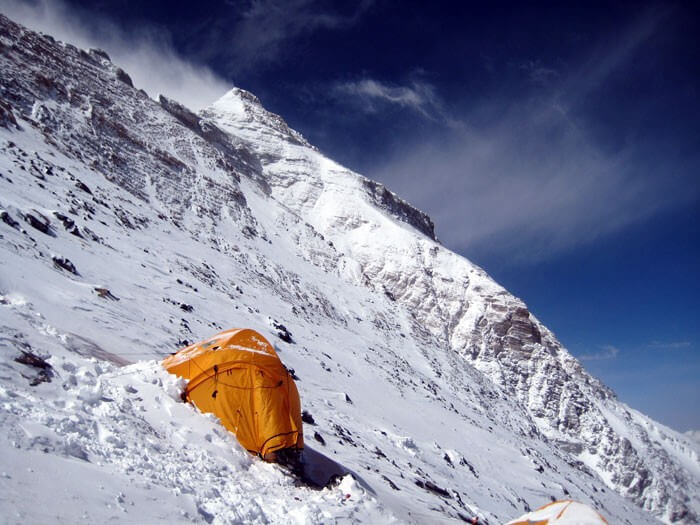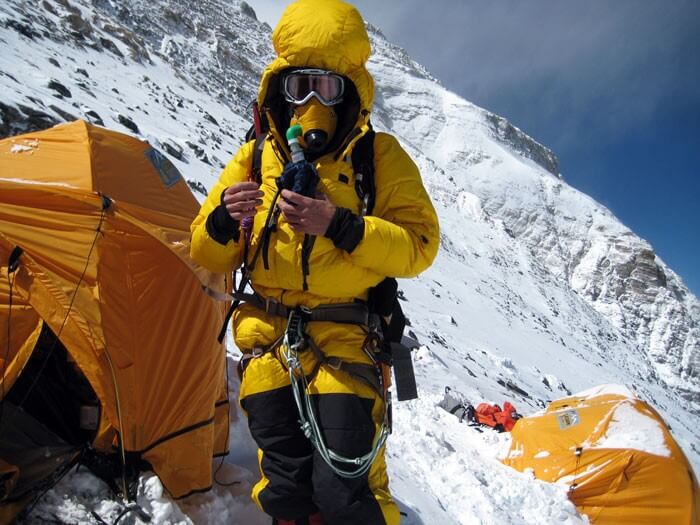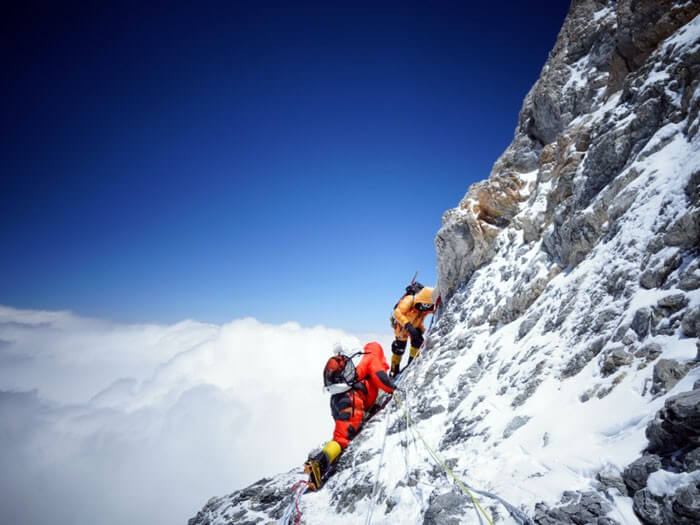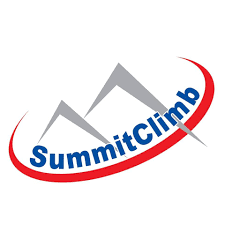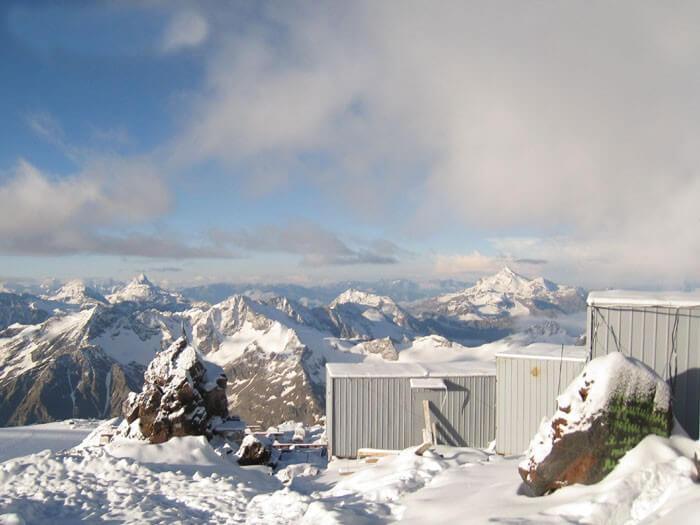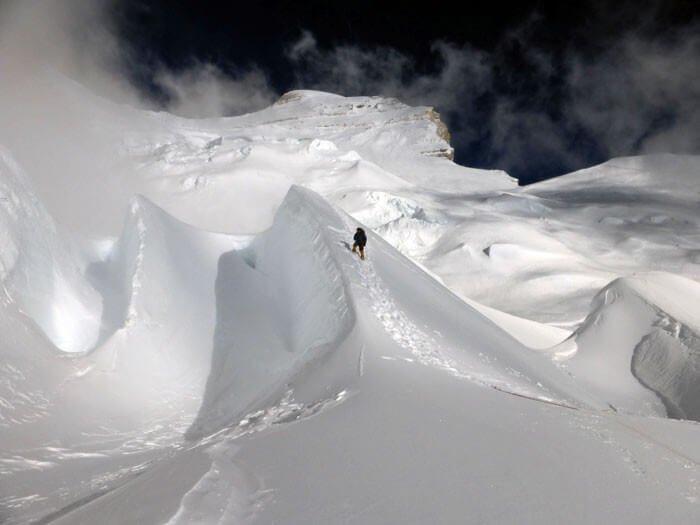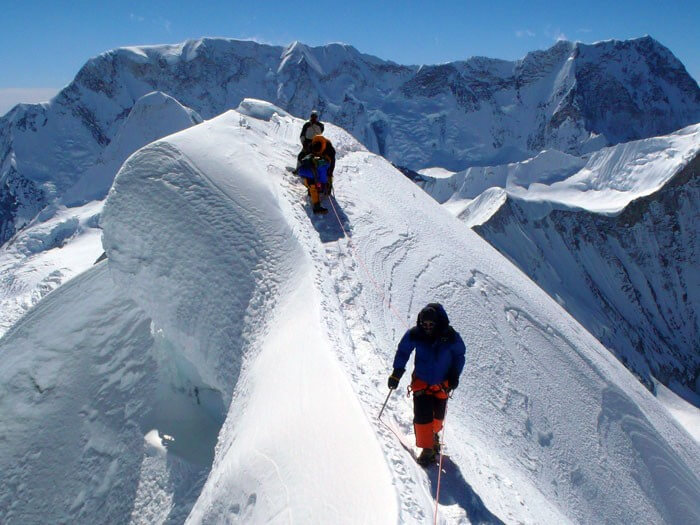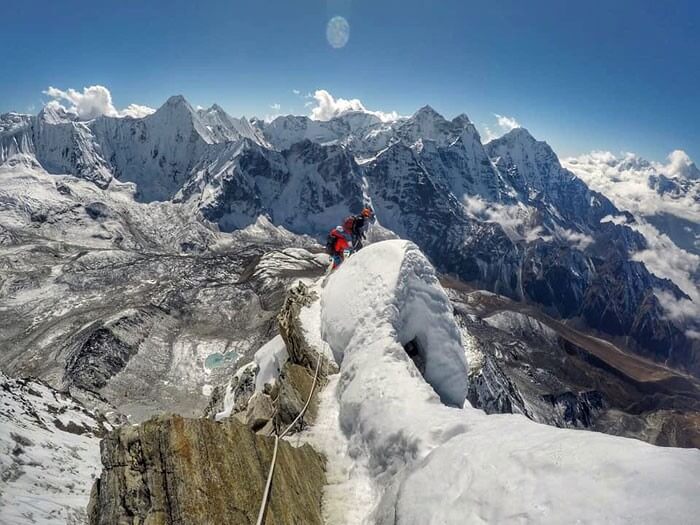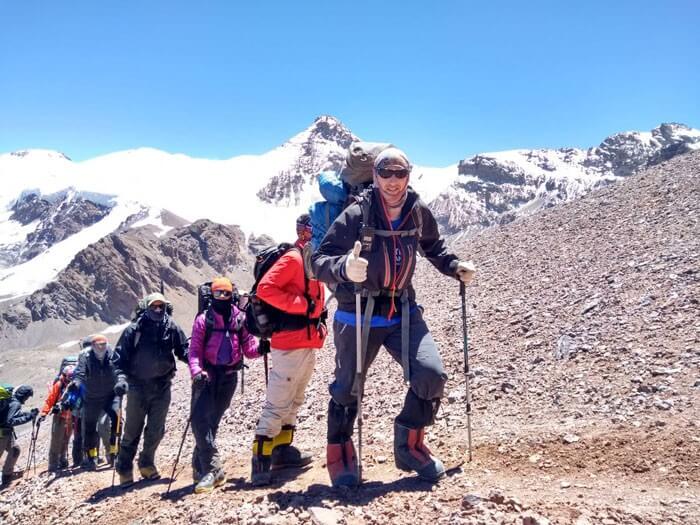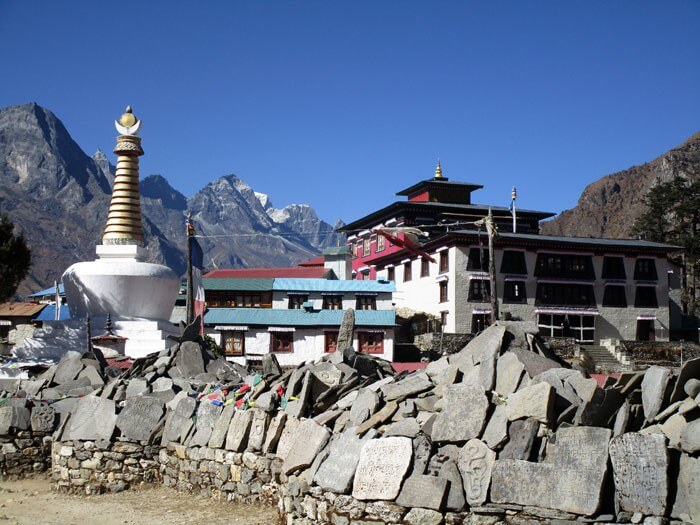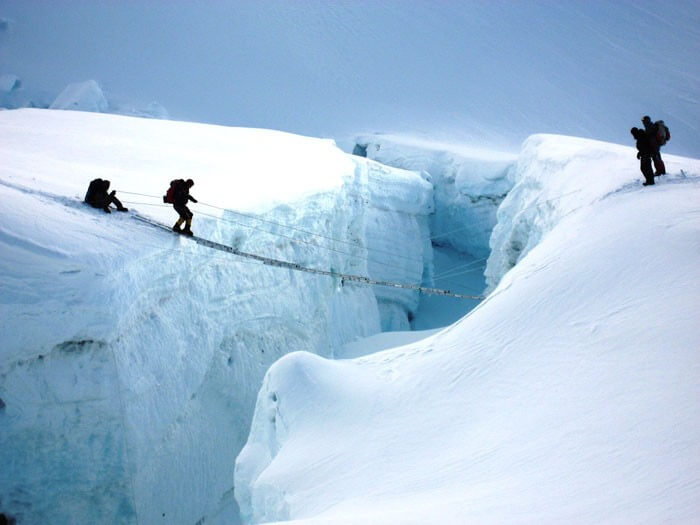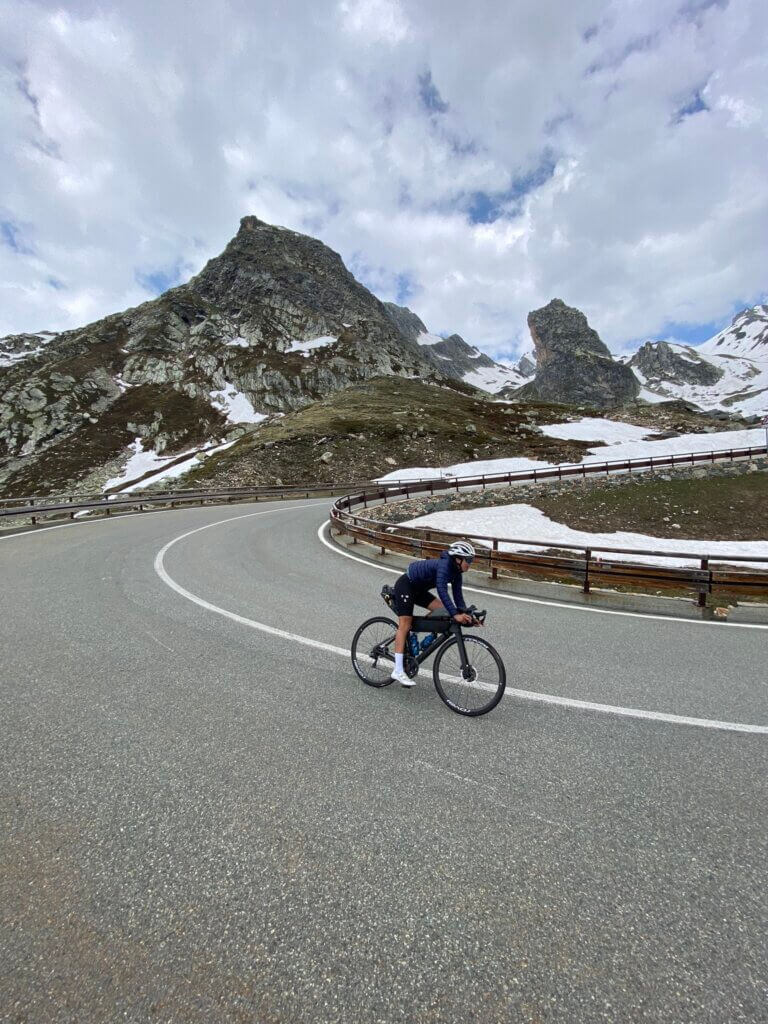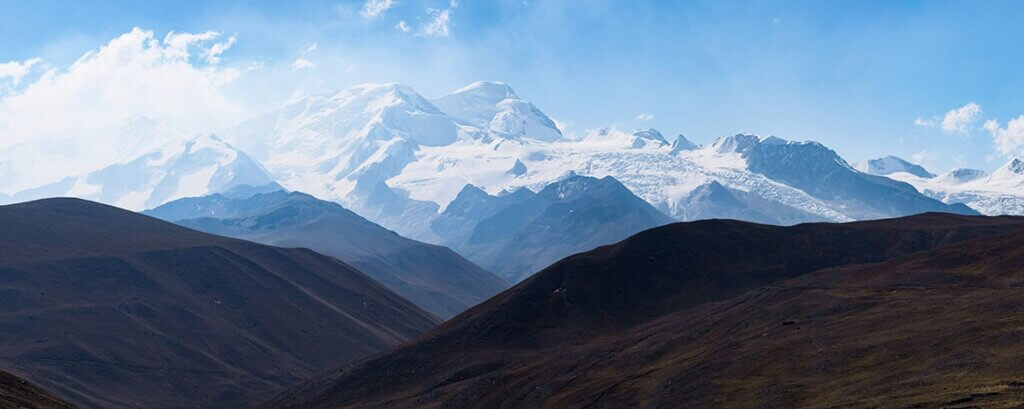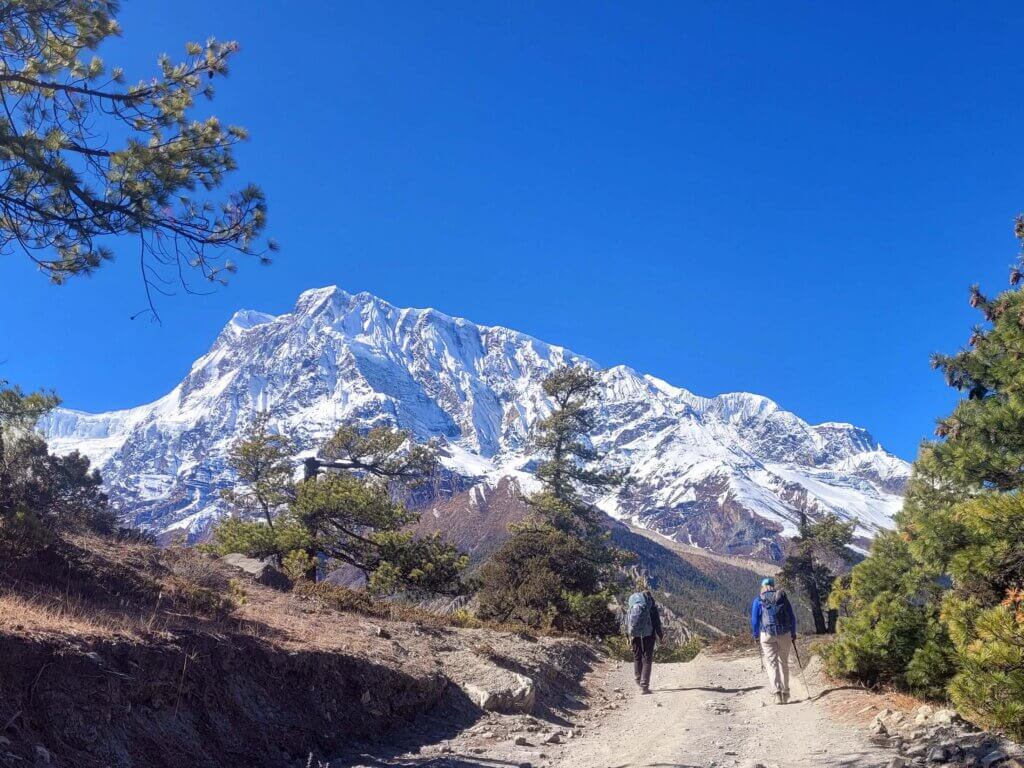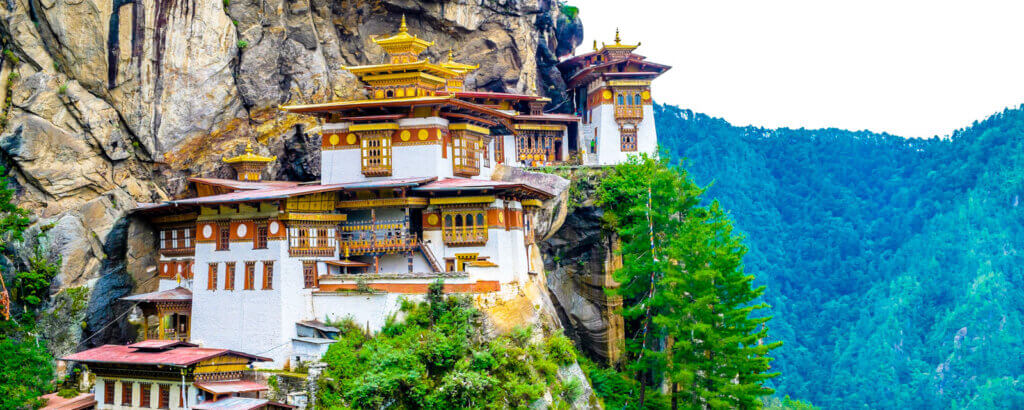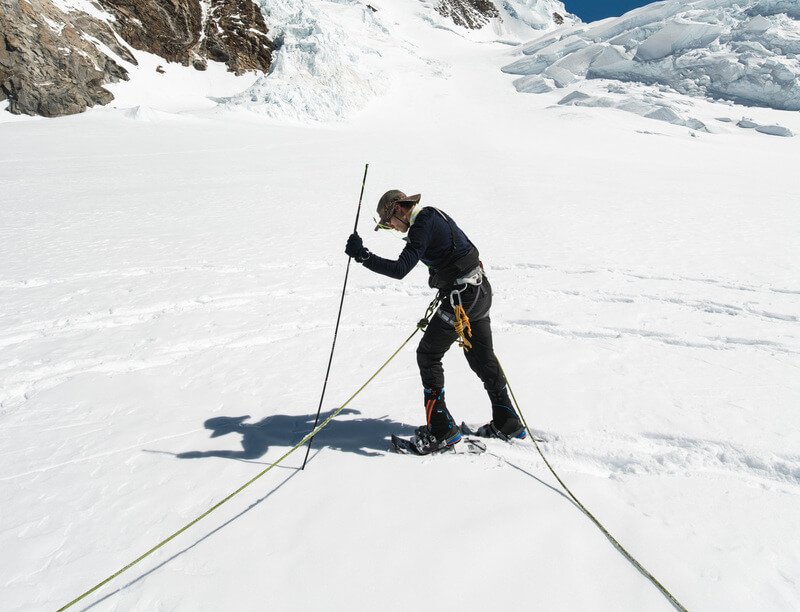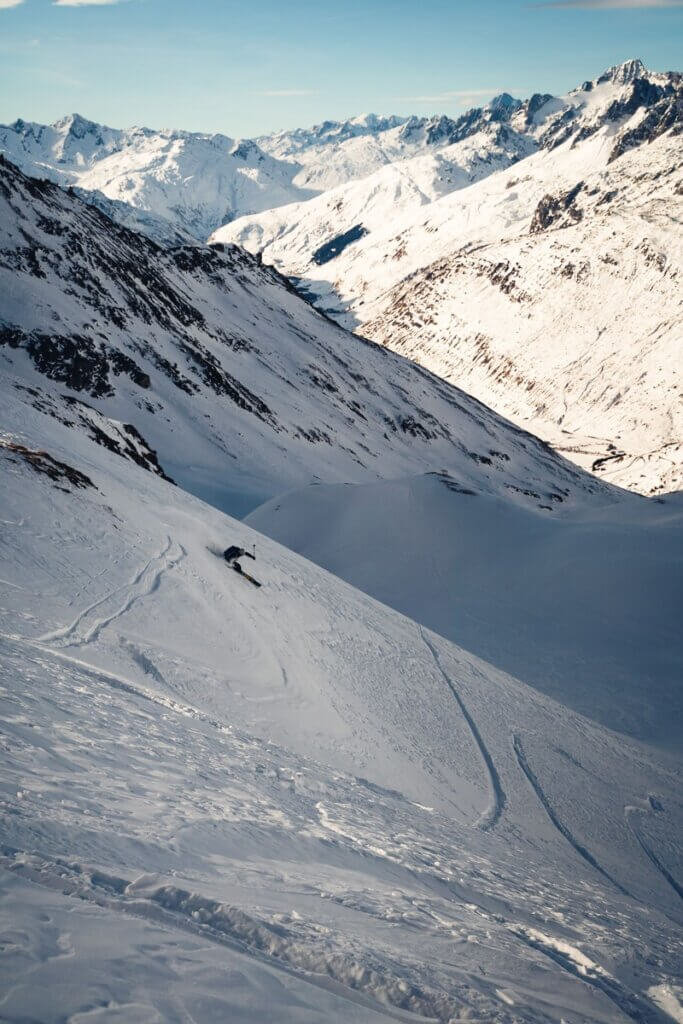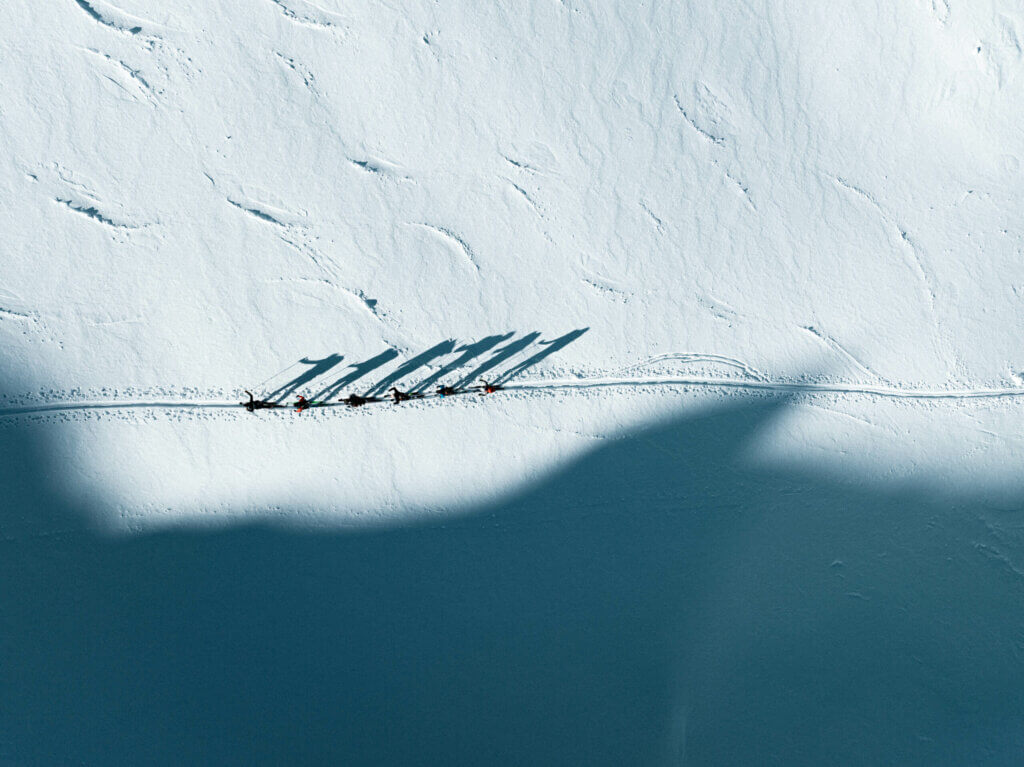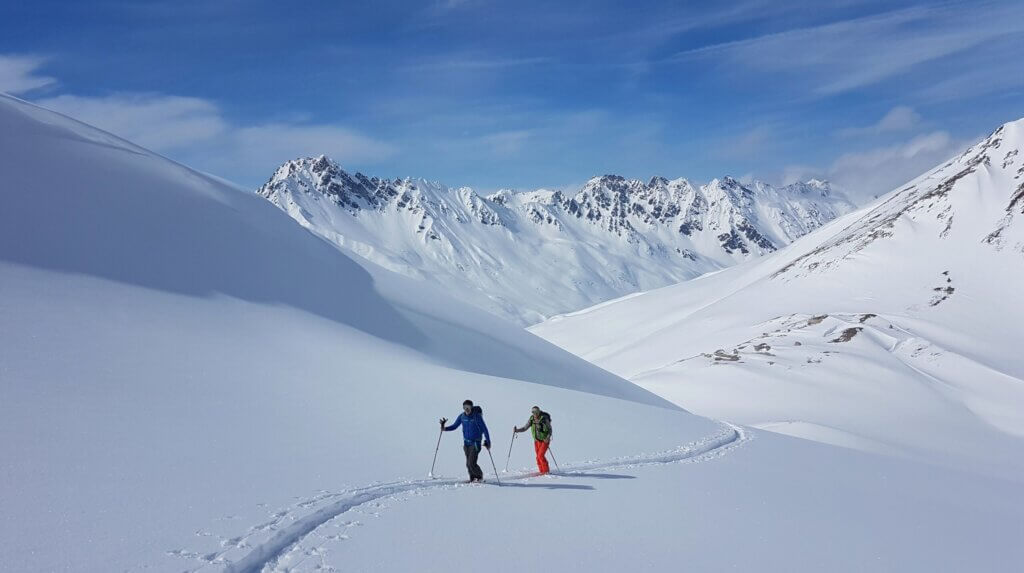General overview
Mount Everest, at 8,848 meters (29,035 feet), is perhaps the most coveted mountain in the world. Climb the less crowded Tibet North Col route made famous by the first attempt to climb Everest by Mallory and Irvine in 1924. This climb avoids the Khumbu Icefall and the long approach hike of the south side. The North side is approached by a drive to basecamp across the Tibetan plateau that includes the best views of Everest. The expedition from North Col Ridge started from the Tibet side and was first climbed in 1960.
Our “full-service” expedition includes:
- British, American, and European leader/coordinator
- 5-bottle set of oxygen, mask, hoses, and regulator (More oxygen available on request)
- 1:1 Climbing Sherpa to member ratio
- All internal/domestic transport
- Full-service trek to/from base camp
- Three meals per day
- Permit fees and liaison officers
- Group gear, emergency equipment, satellite phone
- Personal tents in basecamp (no sharing)
- Double occupancy tents above base camp
- Full base camp with dining tent, showers, bathroom, and solar charging
- Two nights stay in Kathmandu hotel on arrival and two nights prior to departure in a double room. Private rooms are available for a small additional fee.
What is not included?
- International flights to/from Kathmandu
- Mountain climbing rescue and travel insurance
- Personal climbing equipment and clothing
- Extra Oxygen (available on request)
- Gratuities for staff
- Nepalese and Tibetan visas
- Cost of jeep transportation if leaving early
Add on High Attitude Support:
- Private Sherpa (personal guide/porter) – Carries up to 10 kg (22bs) of your personal equipment, climbs with you, melts water, cooks, and will be with you every step of the way.
- Personal equipment carriage service – Sherpa carries up to 10kg (22lbs) of personal equipment up and down the mountain between camps.
Itinerary
1) Arrive in Kathmandu, 1350 meters (4,429 feet). Go to hotel
2) Kathmandu – Go to the Chinese embassy for visa, team orientation meeting, purchasing, packing, visiting temples, city tour, shopping. Stay at a hotel.
3) Early morning drive to Rusuwaghadi at 2557 meters (8,389 feet). Stay at a hotel.
Lhasa option: Fly from Kathmandu to Lhasa, or if you are coming from a city in China, arrive in Lhasa on this day.
4) Enter Tibet, drive to Gyirong at 2700 meters (8,858 feet) Stay at hotel.
Lhasa option: Rest in Lhasa, tour Potala Palace and Jokhang Temple, the most sacred building in all of Tibet.
5) Rest and acclimatization in Gyirong. Walk around the local hills. Stay at hotel.
Lhasa option: Drive to Shigatse. Rest and acclimate. Tour the surrounding area. Visit the 15th century Tashilunpo Monastery, the largest active monastic institution in Tibet.
6) Drive to Tingri, 4300 meters 14,108 feet. Stay at hotel.
Lhasa option: Drive to Tingri. Rest and acclimate, tour the surrounding area.
7) Rest & acclimatization in Tingri. Explore surrounding hills and beautiful meadows. See the restoration of the historical Buddhist temples. Stay at hotel.
8) Drive to Chinese basecamp, 5200 meters (17,060 feet). Camp.
9) Rest and acclimatization in Chinese base. Organize equipment and supplies.
10) Acclimatization hike near Chinese base. Meet the Lama and participate in a Puja ceremony.
11) Rest & acclimatization in Chinese base. Organize equipment and supplies.
12) Walk with the yaks halfway to interim camp, 5800 meters (19,029 feet).
13) Rest and acclimatization at interim camp.
14) Rest and acclimatization in interim camp.
15) Walk with the yaks to advanced base camp (ABC) at 6400 meters (20,9997 feet).
16) Training/rest day in ABC.
17) Training/rest day in ABC.
18) Climb partway up the North Col and return, camp in ABC.
19) Climb to the top of the North Col 7,000 meters (22,966 feet). Return to ABC.
20) Extra day in case of weather, acclimatization, etc.
21) Walk down to Basecamp.
22) Rest in Chinese base.
23) Rest in Chinese base.
24) Rest in Chinese base.
25) Climb to interim camp.
26) Climb to ABC.
27) Rest in ABC
28) Walk to camp 1. Sleep there.
29) Climb to camp 2, return to ABC.
30) Walk down to Basecamp.
31) Rest in Chinese base or drive to a lower village
32) Lower village. Explore historical temples and light hiking.
33) Rest in lower village.
34) Rest in lower village.
35) Lower village. Explore historical temples and light hiking.
36) Go back to Chinese base and rest.
37) Climb to interim camp.
38) Climb to ABC.
39) Rest in ABC.
40) Climb to camp 1. Sleep there.
41) Climb to camp 2, sleep there.
42) Climb to camp 3, sleep there.
43) Attempt summit if conditions allow.
44) Extra day for summit attempt.
45) Extra day for summit attempt.
46) Extra day for summit attempt.
47) Extra day for summit attempt.
48) Extra day for summit attempt.
49) Extra day for summit attempt.
50) Extra day for summit attempt.
51) Extra day for summit attempt.
52) Descend to Camp 1.
53) Descend to ABC.
54) Packing in ABC.
55) Walk to Chinese Base.
56) Packing in basecamp.
57) Early morning drive to Gyirong. Stay at hotel.
58) Early morning drive to Kathmandu. Stay at hotel.
59) In Kathmandu. Final packing, celebration, and say goodbye to new friends.
60) Fly home. Thank you for joining our Mount Everest Expedition
Good to know
Leadership
Leadership: During your full-service expedition, you will benefit from the leadership provided by David O’Brien. David has climbed in the Indian and Nepalese Himalayas as well as in the Alps. He has led expeditions in the high arctic island of Spitsbergen and has a liking for the cold and remote, having crossed Greenland by ski. He has organized and led overland trips in Asia and North Africa.
David has been climbing and working with Summit Climb since 2006 and is a thoughtful, considerate leader. He is a Fellow of the Royal Geographical Society and lives in London with his partner and child.
Sherpas: We employ some of Nepal, Tibet, and the Karakorum’s best local mountaineers and Sherpas to assist team members in realizing their summit goals. Our friendly and loyal high-altitude climbing staff has supported teams to the summits of more than ten of the highest peaks in the Himalayas.
Experience and Training
Prior to winter snow, walking, climbing, camping, and experience at altitude is recommended. The trip includes climbing training. We will teach you everything you need to know about glaciers near base camp. Team members should be fit and in good health. Please see our questions section for fitness training advice.

